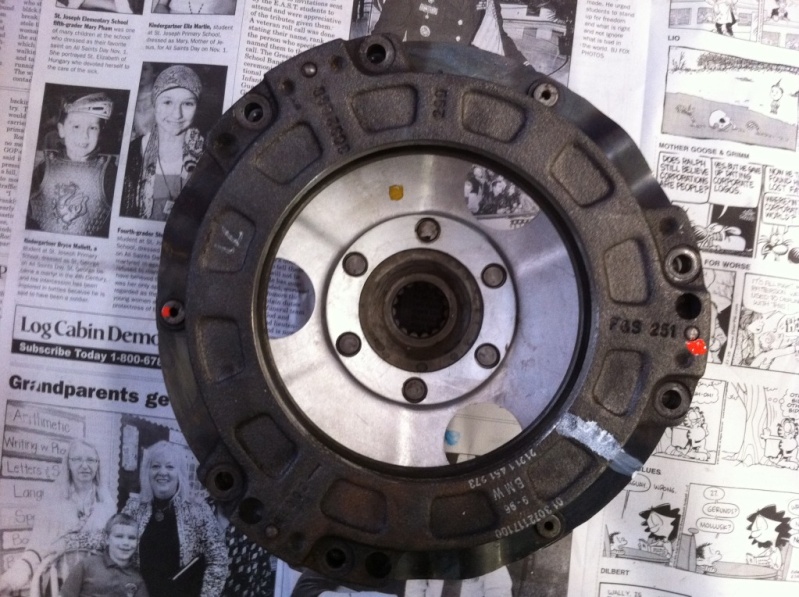Inge K. wrote:Throttle body air bypass adjusting screws at out of syncronisation.
If not all the cylinders get the same amount of air at idle,
it would be out of balance and the results is uneven running and vibration,
and you would get this caracteristic knocking.
I don't say that this is the reason to your problem, but it could be.
OK, so I rode the bike down to the service station today to put some fuel in it (first ride since reassembly), and unlike when in neutral when riding the knocking DOES seem to go away at about 2500 rpm.
The workshop manual basically says unless I have the right equipment for measuring pressure and expertise in the area don't do it (see below). Does anyone here say otherwise? If so, how do I go about it?
Also, when I throttle off there's a sort of grinding/rasping sound, which was always there but is significantly worse now. It might be my imagination but it feels/sounds like it's coming from the same area as the knocking. Could this also be TB adjustment?
My workshop manual instructs on throttle body assembly thus:
Throttle butterfly synchronisation
10 While this task can be carried out using a set of four dial-type vacuum gauges , unless these are of very good quality, with proper glycerine damping. they will not be sufficiently accurate. BMW specify the use of a mercury filled manometer (part number 13 0 700, with adaptors 13 0 702 and 13 0 703) which is much more accurate but more difficult to use.
11 Given these facts , and that synchronisation is likely to be so infrequently required, owners are strongly advised to take their machines to an authorised BMW dealer for this task to be carried out by an expert using the correct equipment. For those owners who have the skill and equipment to carry out such work themselves, proceed as described below.
12 First ensure that the air filter element is clean and/or renewed and that it is securely fastened, also that there are no leaks in the induction system . Check the setting of the choke and throttle cables and that the idle speed is correct (see above). Check that the ignition system (particularly the spark plugs) is in good condition, that the valve clearances are correct and that the exhaust system is sound, with no leaks or damage. If the engine has covered a very high mileage carry out a compression test (see Chapter 1) to ensure that it is in good condition. Note that the engine must be fully warmed up to normal operating temperature (minimum coolant temperature of 85'C/185'F)
before the synchronisation is checked. On K100 RS, K100 RT and K100 LT models, remove the fairing left-hand knee pad and lower side panel to reach the throttle assembly.
13 Note: This check merely corrects small differences, using the bypass screws, in intake vacuum caused by production tolerances and the different rates of wear of various components. It does not provide sufficient adjustment for synchronisation of the butterflies themselves, which should never be disturbed. These are set at the factory using special air flow-measuring equipment; if the butterfly sett ings are ever disturbed the complete assembly must be renewed.
14 If using equipment other than BMW's own, note that aT-piece adaptor will be required to enable the pressure regulator vacuum hose to remain connected while the test is conducted. The vacuum switch fitted to early 100 models (if still installed) can be disconnected during the test since it becomes effective only above idle speed. The vacuum take-off points are covered by small rubber caps. It was found that the hoses of a high-quality vacuum gauge set could be connected to these take-off points, provided that they were secured by small plastic clips. The pressure regulator was connected using the T-piece from a car windscreen washer system.and a short length of tubing.
15 With the engine fully warmed up and the gauges or balancing device securely connected with no air leaks, start the engine and allow it to idle. Where damping adjustment is provided, set it so that the reading flutter is just eliminated but so that it can respond instantly to any small changes in pressure. If aftermarket gauges are being used. it is useful to swap them between different throttle assemblies to ensure that all are producing exactly the same reading; if there is any variation this must be accounted for during adjustment. If anyone cylinder is significantly lower than the others, there may be an air leak in the induction system .
16 All gauges (or mercury columns) must show exactly the same reading with the engine at idle speed. If adjustment is necessary, it is made by rotating the bypass screw set in the appropriate throttle body. Do not disturb the screws and locknuts linking the various throttle butterflies. When all cylinders are giving exactly the same reading, stop the engine and disconnect the equipment.


 Clutch balance? Sun Jan 27, 2013 6:42 pm
Clutch balance? Sun Jan 27, 2013 6:42 pm













 1986 k75, 1985 K100rt,
1986 k75, 1985 K100rt, 




